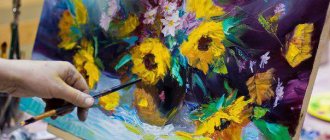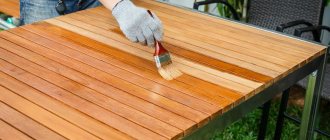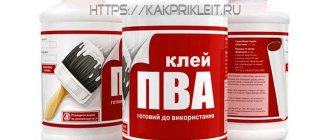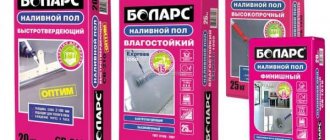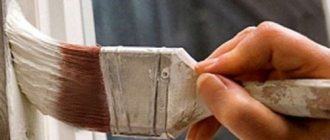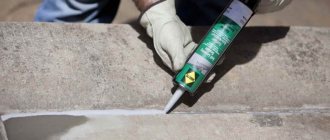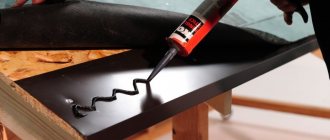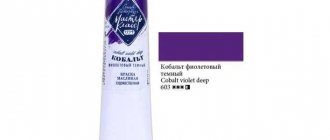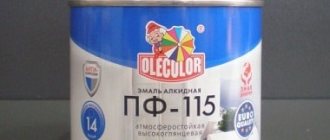Types of varnish for painting:
All varnishes for oil painting can be divided into three types.
Painting (binder) varnishes
Such varnishes are used for diluting oil paints. Those. used directly in the painting process, added to the “tee” (varnish + oil + thinner) or “double” (varnish + oil).
Topcoating (finishing) varnishes
These varnishes are used to coat finished works for protection. And also to give a uniform shine to the paint layer, which after drying can dry out in places (become dull). For brightness and depth of colors.
It is important to remember that an oil painting should be coated after complete drying, which is approximately 1-2 years.
Now, however, an American varnish has appeared on the market, made using a new technology that allows you to cover the picture immediately after the paint has set on the canvas. It is very convenient, but this varnish has not yet been tested for centuries.
Also, all varnishes have their own wear limit; over time they can darken and turn yellow. Then the painting requires recoating the varnish layer (this can happen after 15 years, or after 30, or after 100 years. This depends on many factors, but if the painting is painted technically correctly, with high-quality materials and storage conditions are met, then the varnish can retain its shine and transparency even after 100 years.
Retouch varnishes
Used as an intermediate layer to prevent fading and enhance the adhesion of paint layers. For example, you need to continue a painting that you started painting 1-12 months ago. In this case, it is not recommended to immediately apply paint to the dried layer; it is better to first refresh (soften, for better adhesion to the next layer) the dried paint with retouch varnish.
How to care for a painting
Position the painting so that it does not interfere with the passage and no one can harm it; this primarily applies to small children and animals in the house. Take full responsibility for its fastening so that it is sufficiently reliable.
Direct sunlight can change the appearance of the painting for the worse. So don't hang it in front of a window that you often keep open.
High humidity and temperature changes will also complicate the well-being of the picture. Therefore, do not mount the picture on the external walls of the room, they are always colder than the internal partitions. They do not like paintings and air conditioners, fireplaces, radiators.
If a painting requires storage for some time, then do not place it directly on the floor; the best solution would be to make a small rack, at least 15 cm from the floor, so that moisture does not accumulate and there is good air circulation.
When covering a painting, give preference to cotton fabrics rather than film, which will create a greenhouse effect and can lead to damage to the painting.
To care for the painting, you do not need to use abrasives, chemicals or hard brushes.
When cleaning, it is enough to walk over the surface with a fluffy (or feather) brush without any effort. A vacuum cleaner should not be used for this purpose.
Several times a year it would be good to remove the painting and inspect it from all sides for any damage.
If the picture has a wooden frame, then make sure that there is no wood pest in it.
The most popular varnishes for oil painting:
Dammar varnish
Used for diluting oil paints and for coating finished works. It turns yellow over time; it is better not to use it for canvases painted in cold shades.
Fir varnish
Used for diluting oil paints.
Megilp
It is used for diluting oil paints, as well as as a topcoat and retouching varnish. Over time it turns yellow and becomes cloudy.
copal varnish
Used as an additive to ready-made oil paints in order to give them greater strength and increase their resistance to various external influences. Restorers do not like it as a covering material. Since this is a dark varnish, it is highly durable and does not dissolve in organic solvents.
Cedar varnish
It is used for diluting oil paints and as a retouching varnish.
Retouch varnish
It is used to enhance the adhesion of paint layers during multi-layer painting, when a lot of time passes between sessions and the paint has time to dry thoroughly. And also for correcting fading, revealing color and brightness of paints. Those. applied to the dried layer to dissolve the paint layer to continue working. Not to be confused with topcoat varnishes!
Pistachio varnish
Used to cover finished works. It has an almost colorless elastic varnish film and takes a long time to dry. Does not become cloudy or change color over time. Expensive and rarely on sale.
Acrylic pistachio varnish
Used to cover finished works. It has an almost colorless elastic varnish film and takes a long time to dry. Does not become cloudy or change color over time. Expensive and rarely on sale.,
Acrylic styrene varnish
Considered the most effective and stable topcoat. Has a transparent elastic film. Has high water-repellent properties. Does not become cloudy, darken or change color over time, maintaining the beauty of the tone.
Acrylic artistic varnishes do not turn yellow and are much more stable to any type of darkening and dullness.
Gamblin Gamvar
Topcoating varnish invented using new technology. Appeared relatively recently on our art goods market.
Its uniqueness is that the work can be coated after the initial drying of the paint layer, i.e. when the thickest layers of paint are dry enough and firm to the touch. This provides huge time savings . You don't have to wait 1-2 years to cover a painting.
The varnish itself is transparent, forms a surface with a semi-gloss sheen, and adds richness and depth to the colors.
The manufacturer writes that the varnish can be easily and safely removed using Gamblin Gamsol mineral liquid .
It is interesting how the painting will behave over time, since so far, due to the novelty of the invention of this miracle, there is no such information.
Color fading in the sun
It is known that the disadvantage of most dyes, both used in everyday life and used in industrial production, is their poor resistance to sunlight. The result of this is faded and faded clothing fabrics, room wallpapers, street banners and many other things around us. They usually say about them: “Burned in the sun.”
A similar fate will befall oil paintings on canvas if the artist does not take care to preserve their original appearance. The traditional method, used since time immemorial, is to coat finished paintings with special varnishes that can protect them from exposure to sunlight. They were invented a long time ago, and their composition has changed and improved many times over the centuries.
Key points when working with oil varnishes
- To cover a painting, you must first clean it of dust (just with a dry microfiber or optics cloth, or a special cleaner, after which the painting must dry for a day before varnishing).
- It is better to apply a layer of varnish in a thin layer with a fan or a regular wide brush. A thick layer of varnish is likely to crack. You can simply cover the picture a second time with a thin layer, after the first has dried.
- A painting made using oil technique is covered after complete drying . Wait approximately 1 to 2 years. The exception is Gamblin Gamvar varnish.
- Acrylic varnishes are considered the most stable and effective to use: acrylic-styrene and acrylic-pistachio.
- The topcoat must be fresh ! No more than 3 months should pass from the production date .
There are now a lot of varnish manufacturers, so be sure to carefully study all the properties of the varnish before purchasing.
Choosing a suitable place and time to work
The experience of professionals suggests that in order to properly apply varnish to a painting, you need to take into account some features of the location of your workplace.
To minimize omissions, it is better to work in natural light during the day with the lights turned off. This way, gaps become immediately noticeable and can be easily corrected before the varnish begins to dry out.
The painting should be placed in a horizontal plane to avoid the possibility of drips, placing it in front of the window, and facing the window before work. At this time, it is better to avoid drafts, so the window should not be opened. For the same reason, you should not varnish the painting outdoors. The varnish begins to dry faster and reaches for the brush.
For large work, use an easel, just be very careful about possible smudges. To avoid leaving gaps when covering large areas, divide the picture into zones.
You can ventilate the room when the varnish layer has been completely applied.
If you are working with aerosol varnish, then you need to position the picture vertically and face the light, respectively, with your back to the window.
A recipe available to everyone
Having previously crushed the resin, it is placed in a small bag made of thin cotton fabric (for example, an old stocking is quite suitable), and then dipped into a solution of artistic turpentine for several hours. It is important to note that the container with turpentine must be tightly closed during this entire period.
While in turpentine, the pre-crushed granules dissolve, and all solid impurities settle at the bottom of the bag. The result is a solution of dammar resin, which should then be carefully filtered through muslin or cotton cloth.
An important role is played by the ratio of the amount of dissolved resin to the volume of turpentine, since the concentration of the finished product depends on this. According to generally accepted standards, it is 600 ml of turpentine per 300 g of resin, however, many of those who prefer to prepare the solution with their own hands create the proportions of the components based on personal experience. In the future, if during the process of applying the varnish to the surface of the painting it turns out to be too thick, it can be diluted with alcohol.
Final design
The work on the diamond embroidery is finished, it is covered with several layers of varnish and has already dried, all that remains is to frame it or put it in a passe-partout with glass.
In any case, the mosaic will have to be stretched or attached to a stretcher or base. It is important not to damage or deform it at this stage of design.
Stretcher frames for home crafts are usually made of cardboard. A rhinestone mosaic can be fixed to this material using double-sided tape or PVA glue. It is heavy, it will stick better with glue and will be fixed on the entire surface of the cardboard sheet.
We make a mesh of PVA glue on the cardboard, quickly spread it over the entire surface of the base and lay the canvas with pebbles, press it tightly, iron it without pressure with a soft cloth with a smooth surface.
We carefully insert the dried canvas on cardboard into a frame with glass. The work is finished, you can decorate the interior with diamond mosaics.
If your own skills and experience are not enough to insert stone embroidery, which is quite heavy in terms of weight, into a frame, you can contact a framing workshop.
Compatibility of the varnished surface with CM
Before applying paint to a varnished surface, it is recommended to remove the old coating. If it is difficult to remove or repair time is limited, then paint is applied on top.
Not every dye can be used. The answer to the question of what paint goes on the varnish will be the first before the process of restoring the product begins.
Important: nitro paint provokes peeling of the old coating over time. Again the appearance of the surface will be spoiled.
It is chosen what kind of paint can be applied to the varnish, taking into account the type of product, the place of its use, the indicator of good adhesion to the base is important for the composition. Other technical characteristics of dyes are considered in aggregate:
- Water-dispersible silicone group. Water is used as a solvent, so these are environmentally friendly materials. They are easy to work with because they are highly elastic. A coating is formed that is resistant to water, detergents, and various atmospheric conditions. Rating of the best CMs from manufacturers: first place goes to Tikkurila Euro Extra 20, 2.7 l for 1,500 rubles; second place – Caparol CapaSilan, 2.5 l for 2,900 rubles; third place goes to Alpina Expert, 10 liters for 2890 rubles.
- Enameled alkyd compositions. The paint will adhere to the varnish both outdoors and indoors. The surface becomes saturated in color. Dyes of this group are affordable to the average buyer. The big disadvantage of CM: when it dries, it has a pungent odor. Manufacturers offer KM: Finncolor Garden 30, 9 l for 4800 rubles; Tikkurila Miranol A, 2.7 l for 1899 rubles; Alkyd enamel Tikkurila Empire for furniture base A, 0.9 l for 980 rubles.
Legacy of past centuries
The main component of dammar varnish is a resin of plant origin, which gives it its name. It belongs to the group of soft, alcohol-soluble resins, on the basis of which the production of varnishes was mastered back in the 17th century. It is known that artists often used them not only to cover finished works, but also added them to oils, thereby ensuring that the paints dried as quickly as possible.
It is known from the history of art that many masters of past centuries used balms and essential oils (resin) made from soft resins (including dammar) in their work. The most famous among them are Venetian, as well as Strasbourg terpine and copai balsam. All of them gave a positive effect when used with regular drying oils.
Brand manufacturers
Usually varnishes are produced by the same manufacturers that sell paints. This is a budget "Sonnet" or a little better - "Reeves". A little more expensive there are “Master Class” and varnishes from various foreign manufacturers. These include "Amsterdam", "Galeria" or "Vallejo".
In particular, the best acrylic-styrene varnish “Nevskaya Palitra” is produced in Russia. This is a manufacturer from St. Petersburg, producing several lines, including the aforementioned “Sonnet”, the well-known “Master Class” and “Ladoga”.
Varnishes are most often sold in bottles of 120 milliliters or in aerosols, as in the case of fixative and acrylic-styrene, of 210 milliliters. Bubbles in stores for artists cost on average about 200-350 rubles. It depends on the type of varnish, its ingredients and manufacturer.
In classical art, which includes painting, a thorough approach is important. Poor quality materials, skipping any stage of the process, neglect of tools - all this will be reflected in the final product. Paints must be carefully selected, having studied their properties in advance, stretched evenly and properly glued and primed the canvas, spread the “tee”, or buy ready-made and, of course, cover the painting with a layer of protective varnish after it is completely dry. The result will be a well-made and culturally designed work.
Pleasure
A completely unexpected point! If we buy paintings or color by numbers as a hobby, then why not prolong the pleasure of the process? We chose the plot, it has been there emotionally for a long time, inside this picture. So why run away so quickly? We have a reason to once again enjoy our choice, our joy from creativity, and simply take care of the result of our own labor!
As a note from the ValueART.ru team, we said “Yes” to the varnish.
So, the choice is entirely yours! And help us color the whole world!
